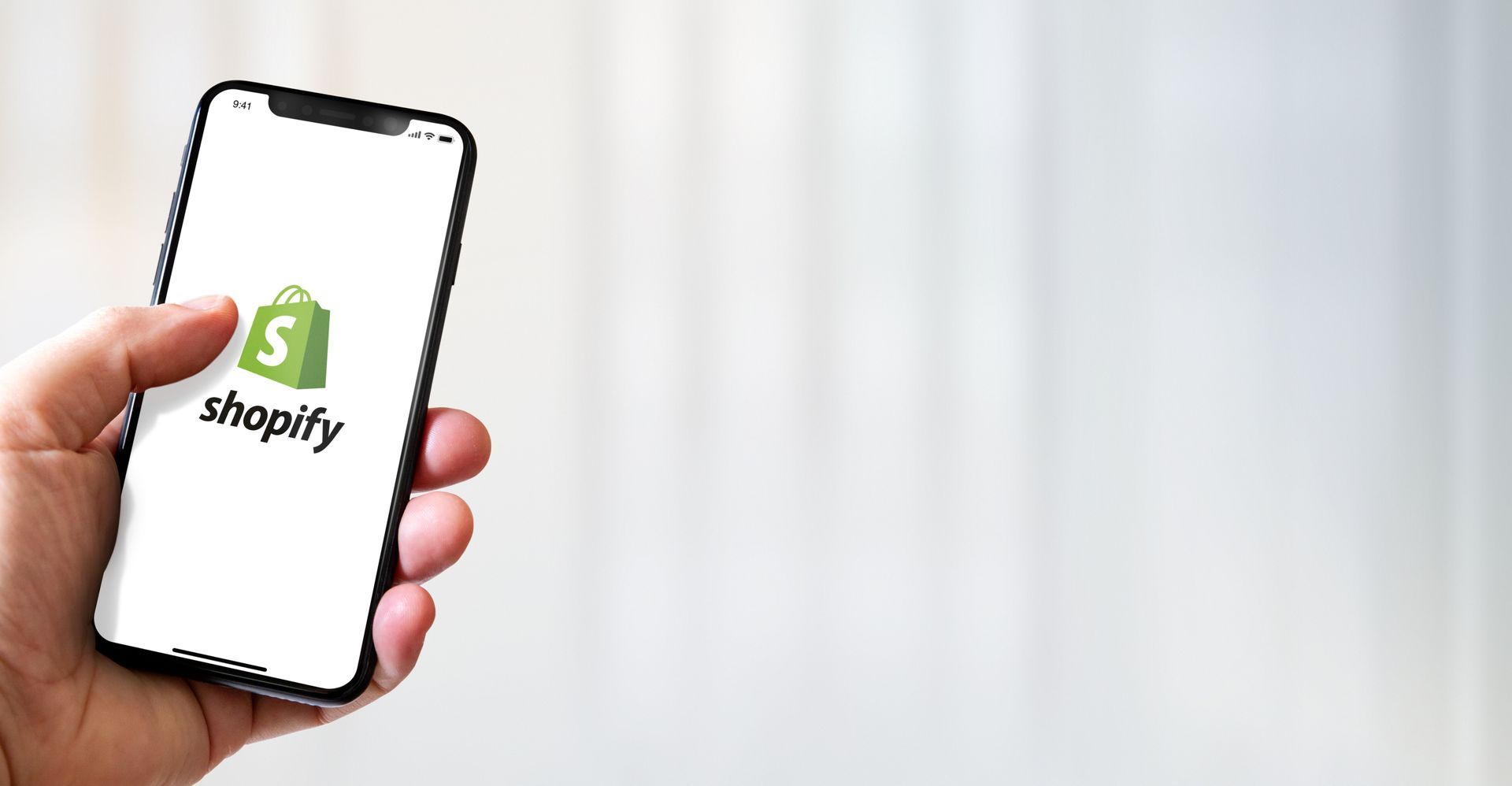Boost Your Shopify Store's Sales with These Tips and Tricks
Boost Your Shopify Store's Sales with These Tips and Tricks
Looking to skyrocket your sales on your Shopify store? Look no further! In this article, we will share some game-changing tips and tricks that will help you boost your Shopify store's sales and take your business to the next level.
With the ever-increasing competition in the e-commerce industry, it's essential to stay ahead of the game. We understand the challenges you face in attracting and converting customers. That's why we've compiled a list of proven strategies that will not only attract more visitors to your store but also turn them into loyal customers.
From optimising your product descriptions to creating compelling content, we will show you how to create a seamless shopping experience that drives sales. We'll delve into the importance of using catchy headlines, leveraging social media, and implementing effective email marketing campaigns. Plus, we'll explore the power of user-generated content and how it can boost trust and credibility.
Are you ready to supercharge your Shopify store's sales? Let's dive in and discover the secrets to success!
Analysing Your Target Audience and Identifying Their Needs and Preferences
Understanding your target audience is fundamental to the success of your Shopify store. By conducting thorough market research and analysing customer data, you can gain valuable insights into their needs, preferences, and buying behavior. This information allows you to tailor your products, messaging, and marketing efforts to better resonate with your target audience.
Start by creating detailed buyer personas that represent your ideal customers. Consider factors such as demographics, interests, pain points, and shopping habits. By segmenting your audience into distinct groups, you can create personalised marketing campaigns that speak directly to their unique needs. Additionally, leverage tools like Google Analytics and Shopify's built-in analytics to track customer behavior and preferences on your store.
Moreover, engage with your audience through surveys, social media interactions, and customer feedback. By listening to their feedback and addressing their concerns, you can build trust and loyalty, ultimately driving repeat purchases and word-of-mouth referrals. Remember, successful businesses are customer-centric and constantly strive to meet the evolving needs of their audience.
Optimising Your Product Listings for Better Visibility and Conversion
Your product listings play a critical role in attracting and converting customers on your Shopify store. To optimise your listings for better visibility and conversion, focus on creating detailed and engaging product descriptions that highlight the key features, benefits, and unique selling points of each item. Use high-quality images and videos to showcase your products from different angles and provide a visual representation of their quality and functionality.
Additionally, optimise your product titles and meta descriptions with relevant keywords to improve search engine visibility. Conduct keyword research to identify popular search terms in your niche and integrate them strategically into your product listings. By optimising your listings for SEO, you can attract organic traffic and improve your store's visibility on search engine results pages.
Furthermore, consider implementing user-generated content such as customer reviews, ratings, and testimonials on your product pages. User-generated content adds social proof and credibility to your listings, helping potential customers make informed purchase decisions. Encourage satisfied customers to leave reviews and share their experiences to build trust and authenticity around your brand.
-
Implementing Effective Pricing Strategies to Attract and Retain Customers
Pricing is a key factor that influences purchasing decisions and directly impacts your Shopify store's sales performance. To attract and retain customers, it's essential to implement effective pricing strategies that strike a balance between profitability and competitiveness. Consider factors such as product costs, market demand, competitor pricing, and perceived value when setting your prices.
One effective pricing strategy is dynamic pricing, where you adjust your prices based on real-time market conditions, customer demand, and competitor pricing. By leveraging dynamic pricing tools and algorithms, you can offer personalised pricing to individual customers, maximise revenue, and stay competitive in a fast-paced market. Additionally, consider running promotions, discounts, and bundle offers to incentivise purchases and drive sales.
Moreover, consider implementing tiered pricing models, subscription plans, and loyalty programs to encourage repeat purchases and build customer loyalty. By rewarding loyal customers with exclusive discounts, rewards, and benefits, you can increase customer retention and lifetime value. Remember, pricing is a powerful tool that can influence customer perception and behaviour, so it's important to continuously monitor and adjust your pricing strategy based on market trends and customer feedback.
-
Utilising Persuasive and Compelling Product Descriptions and Images
Compelling product descriptions and images are essential for capturing the attention of potential customers and persuading them to make a purchase on your Shopify store. To create persuasive product descriptions, focus on highlighting the unique features, benefits, and value propositions of each product. Use descriptive language, storytelling techniques, and emotional triggers to engage customers and evoke a desire to buy.
When it comes to product images, prioritise high-quality visuals that showcase your products in the best light. Invest in professional photography or graphic design to create visually appealing images that accurately represent your products. Include multiple images from different angles, close-up shots of key details, and lifestyle images that show your products in use. By providing a comprehensive visual experience, you can enhance the perceived value of your products and increase conversions.
Additionally, consider incorporating video content into your product listings to provide an interactive and engaging shopping experience. Product videos allow customers to see your products in action, understand their features and benefits, and make informed purchase decisions. Experiment with different video formats such as product demos, tutorials, and customer testimonials to showcase your products in a dynamic and compelling way.
-
Enhancing the User Experience Through a Seamless and Visually Appealing Website Design
The user experience (UX) of your Shopify store plays a crucial role in attracting and retaining customers. A seamless and visually appealing website design not only enhances customer satisfaction but also influences purchasing behavior and brand perception. To create a positive user experience, focus on intuitive navigation, fast loading times, mobile responsiveness, and visually appealing design elements.
Start by optimising your website layout and navigation to make it easy for visitors to find what they're looking for. Use clear and descriptive menu labels, prominent search functionality, and intuitive categorisation to guide users through your store. Ensure that your website loads quickly and is optimised for different devices and screen sizes to provide a consistent experience across all platforms.
Moreover, pay attention to visual design elements such as colour schemes, typography, and imagery to create a cohesive and engaging brand identity. Use high-quality graphics, engaging visuals, and compelling calls-to-action to capture the attention of visitors and encourage them to explore your products further. Remember, a visually appealing website design not only enhances the overall user experience but also builds credibility and trust with your audience.
Furthermore, optimise your checkout process to streamline the purchasing journey and reduce cart abandonment rates. Minimise the number of steps required to complete a purchase, offer multiple payment options, and provide transparent shipping and return policies to instill confidence in your customers. By prioritising user experience at every touchpoint, you can create a memorable shopping experience that keeps customers coming back for more.
-
Leveraging the Power of Social Media Marketing to Drive Traffic and Sales
Social media marketing is a powerful tool for driving traffic, generating leads, and increasing sales for your Shopify store. With billions of active users on social platforms, leveraging social media marketing allows you to reach a wide audience, engage with customers, and build brand awareness.
By developing a strong social media strategy, you can drive targeted traffic to your store, generate leads, and ultimately boost sales.
Start by identifying the social media platforms where your target audience is most active. Whether it's Facebook, Instagram, Twitter, or Pinterest, choose the platforms that align with your business goals and target demographic. Create engaging and shareable content that resonates with your audience, such as product showcases, behind-the-scenes glimpses, customer testimonials, and industry insights.
Additionally, consider running social media advertising campaigns to reach a larger audience and drive traffic to your Shopify store. Platforms like Facebook Ads, Instagram Ads, and Pinterest Ads offer powerful targeting options that allow you to reach specific demographics, interests, and behaviours. Experiment with different ad formats, creatives, and messaging to optimise your campaigns for maximum impact.
Moreover, engage with your followers through regular posts, stories, and live videos to build a loyal community around your brand. Encourage user-generated content, host giveaways and contests, and collaborate with influencers to expand your reach and increase brand visibility. By fostering meaningful relationships with your audience on social media, you can drive traffic, build trust, and ultimately drive sales on your Shopify store.
-
Implementing Email Marketing Campaigns to Nurture Leads and Increase Repeat Purchases
Email marketing remains one of the most effective and cost-efficient ways to nurture leads, engage customers, and drive sales for your Shopify store. By building an email list of subscribers who have opted in to receive communications from your brand, you can deliver personalised content, promotions, and product updates directly to their inbox. With a well-crafted email marketing strategy, you can nurture leads, increase conversions, and foster customer loyalty.
Start by segmenting your email list based on factors such as purchase history, browsing behaviour, and demographic information. By sending targeted and relevant content to different segments of your audience, you can increase engagement and conversion rates. Personalise your email campaigns with dynamic content, personalised recommendations, and exclusive offers to make each subscriber feel valued and appreciated.
Additionally, automate your email marketing campaigns to deliver timely and relevant messages throughout the customer journey. Use marketing automation tools to send welcome emails, abandoned cart reminders, product recommendations, and post-purchase follow-ups. By automating repetitive tasks and workflows, you can save time and resources while delivering a seamless and personalised experience to your subscribers.
Moreover, measure and analyse the performance of your email campaigns using metrics such as open rates, click-through rates, conversion rates, and revenue generated. A/B test different subject lines, content formats, and call-to-action buttons to optimise your campaigns for better results. By continuously refining your email marketing strategy based on data and insights, you can drive engagement, increase conversions, and maximise the ROI of your email efforts.
-
Monitoring and Analysing Your Store's Performance Using Shopify Analytics and Tools
Monitoring and analysing your Shopify store's performance is essential for understanding customer behaviour, identifying trends, and optimising your sales strategy. With Shopify's built-in analytics and reporting tools, you can track key metrics such as traffic sources, conversion rates, average order value, and customer lifetime value. By regularly analysing these metrics, you can make data-driven decisions to improve your store's performance and drive growth.
Start by setting up Google Analytics integration with your Shopify store to track website traffic, user behaviour, and conversions. Use Google Analytics to monitor key performance indicators such as bounce rate, session duration, and goal completions. By gaining insights into how visitors interact with your store, you can identify areas for improvement and make informed decisions to optimise the user experience.
Moreover, leverage Shopify's reporting tools to track sales performance, inventory levels, and customer behaviour. Use the Sales Reports, Traffic Reports, and Customer Reports to gain a comprehensive view of your store's performance and identify opportunities for growth. Analyse trends, patterns, and customer feedback to refine your product offerings, pricing strategies, and marketing campaigns.
Additionally, consider using third-party analytics tools and plugins to gain deeper insights into your store's performance. Tools like Hotjar, Crasy Egg, and Lucky Orange provide heatmaps, session recordings, and user feedback that can help you understand how visitors interact with your store and identify areas for optimisation. By combining data from multiple sources, you can gain a holistic view of your store's performance and make informed decisions to drive sales and profitability.

Conclusion: Making the Best Decision for Your Business
In conclusion, the decision between hiring a freelancer or an agency for your business ultimately depends on your unique needs, project requirements, and long-term goals. Freelancers offer flexibility, cost-effectiveness, and specialised expertise, making them ideal for specific project needs with tight deadlines or limited budgets.
On the other hand, agencies provide access to a diverse team of experts, scalability, and a comprehensive approach to meet your business needs, making them suitable for complex projects requiring multiple skill sets and integrated services. While agencies may be more expensive and have longer turnaround times, they offer a broader range of services and project management capabilities that can drive successful project outcomes.
When deciding between a freelancer and an agency, consider factors such as budget considerations, communication and availability, skillset and expertise, flexibility and scalability, and the specific requirements of your project. By conducting a thorough assessment and weighing the pros and cons of each option, you can make an informed decision that aligns with your business objectives and leads to successful project delivery.
Ultimately, whether you choose to hire a freelancer or an agency, the key is to prioritise clear communication, realistic expectations, and a collaborative working relationship to ensure a positive project experience and achieve your desired outcomes.
By evaluating your project needs and selecting the right fit for your business, you can embark on a successful outsourcing journey that drives business growth and innovation.
 Rating
Rating

Let's have a coffee
We’d love to hear from you! Just choose the most convenient method and we’ll get back to you as soon as we can.
Tel: 01244 629 523
Email: hello@H10marketing.co.uk
© Copyright 2024 H10 Marketing Ltd. All Rights Reserved.
Company Registration No: 11030469. VAT No. 427333211. Registered Office: Attention: Sarah Hawkins, 1 Old Marsh Farm Barns Business Centre, Old Marsh Farm Road, Sealand, Deeside, Flintshire, CH5 2LY, United Kingdom.












